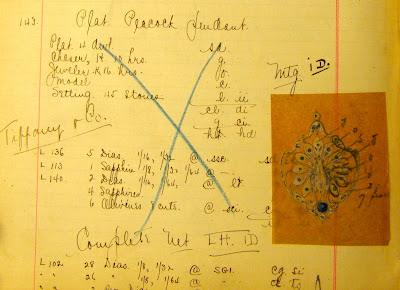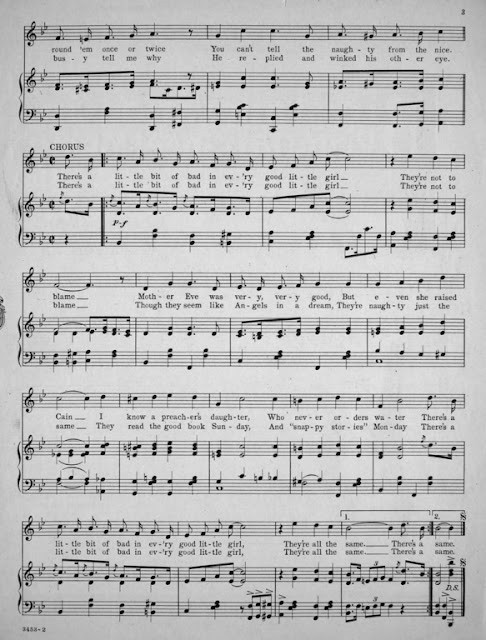Pencil ring design from Gustav Manz jewelry ledger; purchased by Pickslay & Company, circa 1911
Gustav Manz archive, Wintherthur Library
Before Cartier's Jeanne Toussaint thought of placing a friendly spotted panthère on cabochon emeralds—or having one jump through hoops, as seen in the firm's recent promo video—quite a few jungle cats loped through glittering cases on New York's Fifth Avenue, and Boston's Washington Street, and Jewelers Row in Chicago. A good number of them, such as the panther confronting a snake in the drawing above, were designed and executed in gold or sterling silver by the early 20th century animalier and jewelry maker Gustav Manz.
Panthere clip-brooch designed circa 1948 by Cartier's Jeanne Toussaint (Duchess of Windsor collection)
Image copyright Cartier
Okay, we'll admit, L'Odyssée de Cartier IS pretty great marketing candy. It reminds us of the sleepy princess in Hans Christian Andersen's "The Tinder Box"—carried away on the back of a sleek cat rather than a dish-eyed dog... We were equally awestruck when one of Gustav Manz's rare carved panther rings surfaced at Skinner's recent fine jewelry sale this month.
Lot 238 carried us back to April 1904, when Manz's hand-wrought gold and sapphire panther ring appeared at the Fine Arts pavilion at the St. Louis world's fair, along with dozens of other pieces he executed for jeweler F. Walter Lawrence's exhibit case. An unnamed fairgoer purchased the ring according to archived correspondence between Lawrence and Halsey C. Ives, Chief of the Department of Art at the expo.
The gold ring depicting a tiger swiping at a snake in the grass shown above was included in Manz's display at the 8th Exhibit of Industrial Arts held at the Metropolitan Museum of Art, and appeared on the opening page of The Jewelers' Circular coverage of the show in January 1924. The typesetter inadvertently printed it upside down; nonetheless it was one of his bestselling designs.
A Star Sapphire and 14K Gold Panther and Snake ring attributed to Gustav Manz, offered at Skinner's Fine Jewelry Sale, June 14, 2011
The gold ring depicting a tiger swiping at a snake in the grass shown above was included in Manz's display at the 8th Exhibit of Industrial Arts held at the Metropolitan Museum of Art, and appeared on the opening page of The Jewelers' Circular coverage of the show in January 1924. The typesetter inadvertently printed it upside down; nonetheless it was one of his bestselling designs.
Above: Manz sketch for a ring with cabochon sapphire, sold to Moore & Mason, 1925; below, Manz sales record for a panther and snake ring purchased by Tiffany & Co in 1913; bottom, drawing of a panther stickpin set with a cabochon gem from Manz's design scrapbook
Image copyright Gustav Manz LLC
Image copyright Gustav Manz LLC
Manz's business ledgers from 1910-1925 show multiple variations of jungle cats poised to pounce, stalking snakes and other characteristic poses—on men's rings and sleeve-links and scarf-pins, with cabochon or calibre stones. Buyers included Tiffany & Company, Shreve, Crump & Low, Pickslay & Co, and other bespoke jewelry merchants. Manz's artful evocation of nature tooth and claw evidently spoke to gentlemen and sportsmen of the Gilded Age. You could say they, like Andersen's and Cartier's princess, were carried away.
Check out other historic Gustav Manz jewelry designs on this blog. Below: a transporting moment from Kay Nielsen's circa 1930 illustrations for Hans Christian Andersen's "The Tinder Box"
Extracts from Gustav Manz ledgers courtesy of
Winterthur Museum; except as noted, other images and text
Copyright © 2012 | Gustav Manz LLC
Winterthur Museum; except as noted, other images and text
Copyright © 2012 | Gustav Manz LLC
All Rights Reserved
Text updated 9/15/2015
Text updated 9/15/2015




+Gustav+Manz.jpg)
+copy.jpg)
+Gustav+Manz++DSC00343_2.jpg)




+Gustav+Manz+LLC.jpg)





















